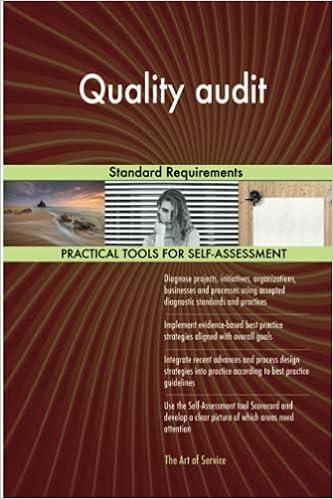Question
1 A company makes two products: tables and chairs. While performing a multi-product Cost-Volume-Profit Analysis for this company, you noticed that break-even sales INCREASED due
1 A company makes two products: tables and chairs. While performing a multi-product Cost-Volume-Profit Analysis for this company, you noticed that break-even sales INCREASED due to
A a decrease in the total fixed cost.
B a decrease in the variable cost per unit for tables.
C a decrease in the selling price per unit for tables.
D an increase in the selling price per unit for chairs.
2 A company makes two products: tables and chairs. While performing a multi-product Cost-Volume-Profit Analysis for this company, you noticed that break-even sales DECREASED due to
A an increase in the total fixed cost.
B an increase in the variable cost per unit for tables.
C an increase in the variable cost per unit for chairs.
D an increase in the contribution margin ratio.
3 A company makes two products: tables and chairs. While performing a multi-product Cost-Volume-Profit Analysis for this company, you noticed that break-even units for chairs INCREASED due to
A a decrease in the total fixed cost.
B an increase in the variable cost per unit for tables.
C a decrease in the variable cost per unit for chairs.
D None of the above
4 Which of the following is TRUE about allocating overhead using a volume-based overhead rate?
A You need to know the budgeted overhead and budgeted cost driver to compute the predetermined overhead rate.
B You need to know the budgeted overhead and actual cost driver to compute the predetermined overhead rate.
C You need to know the actual overhead and budgeted cost driver to compute the predetermined overhead rate.
D You need to know the actual overhead and actual cost driver to compute the predetermined overhead rate.
5 As volume increases, what happens to your total variable cost?
A it increases within the relevant range
B it decreases within the relevant range
C it stays constant within the relevant range
D it stays constant between relevant ranges
6 When are fixed costs going to be constant?
A In total between relevant ranges
B In total within the relevant range
C Per unit between relevant ranges
D Per unit within the relevant range
7 Which of the following is FALSE about allocating overhead using activity-based costing overhead rates?
A You need to know the budgeted overhead amount for each activity pool to compute the predetermined overhead rate for that activity.
B You need to know the budgeted cost driver amount for each activity to compute the predetermined overhead rate for that activity.
C You need to know the actual overhead amount for each activity pool to allocate overhead to that activity.
D You need to know the actual cost driver amount for each activity to allocate overhead to that activity.
Step by Step Solution
There are 3 Steps involved in it
Step: 1

Get Instant Access to Expert-Tailored Solutions
See step-by-step solutions with expert insights and AI powered tools for academic success
Step: 2

Step: 3

Ace Your Homework with AI
Get the answers you need in no time with our AI-driven, step-by-step assistance
Get Started


